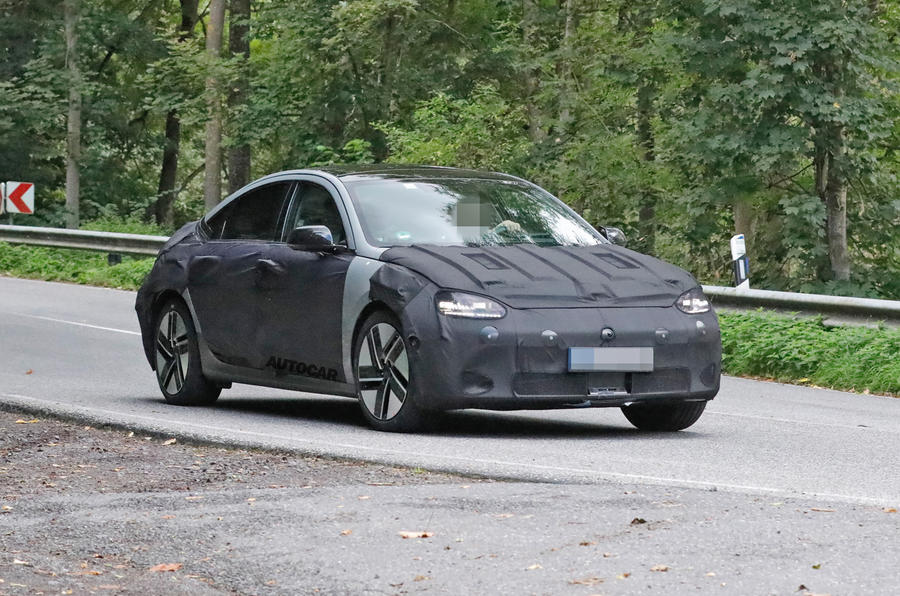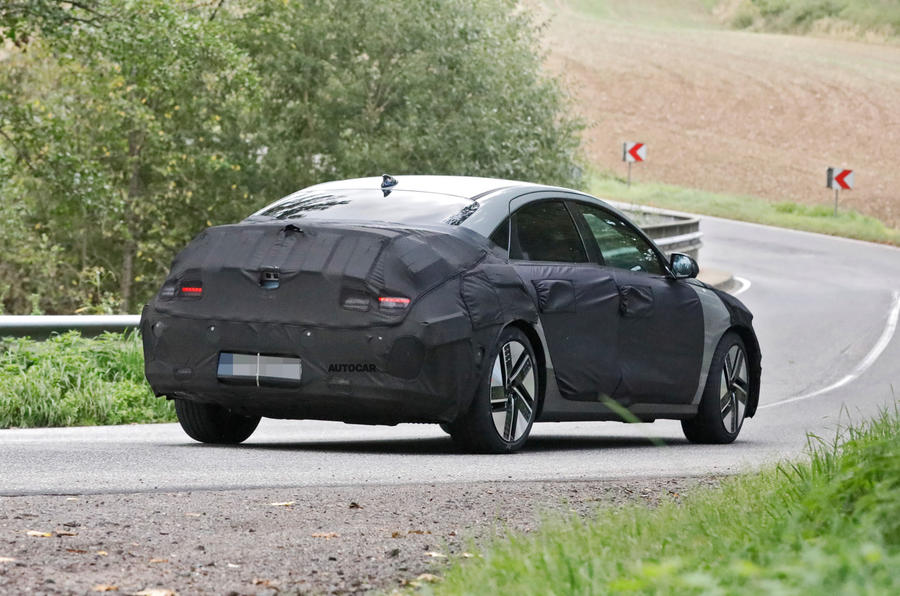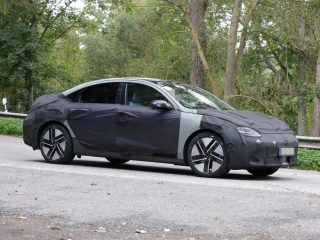Hyundai’s upcoming Ioniq electric sedan has apparently been pushed back to mid-2022 to allow design and powertrain upgrades.
The Ioniq 6, Hyundai’s second bespoke electric car, has been spotted out on the road for the first time, but reports from Korea suggest the final design will change substantially.
According to the Korean Economic Daily, the launch of the Ioniq 6 has been pushed back to mid-2022 to allow the body to be lengthened by 20mm, the bumpers and lights to be restyled and the battery to be upsized from 72.6kWh to 77.4kWh.
The design changes should mean the electric sedan more closely resembles the striking Prophecy concept, which made its public debut at the recent Munich motor show. The prototype spotted here has much more conventional headlights and a more upright silhouette than the concept, although gaps in the camouflage show a similar pixel-style rear light bar design.
The EV’s belated launch has also been attributed to a delayed overhaul of the Asan factory where it will be produced. That site currently builds the combustion-engined Sonata saloon and needs refitting to build cars based on the E-GMP platform.
Technically, the Ioniq 6 will be broadly identical to the Ioniq 5, with which it shares the new E-GMP architecture. That means 800V charging hardware will feature and the saloon is likely to be offered with a choice of single- and dual-motor powertrains.
However, a battery capacity of 77.4kWh would just edge the 5’s 73kWh pack, which, along with the 6’s more overt focus on aerodynamic efficiency, is likely to push the sedan’s maximum range beyond 500km.
It remains unconfirmed whether the Ioniq 5’s smaller 58kWh battery will be an option.
The 77kWh battery pack is already available in sibling brand Kia’s new EV6 crossover, which suggests the Ioniq 6 could be more closely related to that car technically, in line with its performance billing. That means the rear-wheel-drive version is likely to use a 167kW motor, while four-wheel-drive cars will produce either 239kW or – in top-rung N trim – match the EV6 GT’s 430kW.
Felix Page







